(In-Situ User-Testing)
Investigative Bureau:
Investigative Bureau:
A Participatory Imagining Workshop
(Design Statement)
Embodying the theories behind Critical Design and the optimisation of frameworks as research models for future thinking, the project employs such framework in means of collaborative imagining workshops to create fictional and speculative outcomes in Singapore, in hopes of bringing light to the current issues of Man's impact on Earth today within a local context within the Anthropocenenic era.
(Project Context)
We are in an era of the Anthropocene (anthropo, for' person' and -cene, for' new') – after years of human impact, we are increasingly faced a crossroads in the way we coexist with our environment. Yet given our collective inability to reverse human impact through impactful and lasting change, it is prudent to envision how human coexistence with our environment will take form in a post-Anthropocene era.
Human interactions with our natural environment has been predominantly destructive, with activities like the burning of fossil fuels coupled with deforestation adding to the release of greenhouse gases. Such Greenhouse-gas (GHG) emissions into the atmosphere propagate a greenhouse effect, absorbing infrared-radiation leading to global warming. With these activities showing no indications of slowing down, temperatures have grown to the highest on our planet in tens of thousands of years. This directly impacts the thawing of permafrost and thinning of winter ice in the arctic, a precursor to rising sea levels and flooding of low land areas
The era of Man, known as the Anthropocene (from anthropo, for' person' and -cene, for' new') is one which through incessant human activity, has seen the most dominant detriment on both the climate and environment of the Earth. Over the past few centuries, humans have inflicted much damage upon our environment, presiding over mass extinctions of plant and animal species, polluting our oceans and altering the chemical balance of our atmosphere. The Anthropocene marks a significant epoch, in which our actions have drastically altered Earth’s balance and composition purely through human actions alone.
Climate change is not a new phenomenon. From the Kyoto Protocol to the Paris climate talks, human impact on the environment has been a source of nagging concern for humanity. The Guardian reports that it has been fifty years since climate change was observed. and we increasingly see that these effects have substantial impact on the habitants of the Earth and its geological makeup. Now, time is running out. As the clock counts down, it is increasingly alarming that we as inhabitants of this planet do not truly understand the stakes and extent our actions hold today. Such begets the question - What can designers do to be involved in the process of raising awareness from the masses regarding this issue?
The task lies not in proposing solutions that may help reverse the detriments that human behaviour has had on the planet, but to envision plausible solutions and scenarios in which humans and the planet could live congruently and cohesively via sceptical and fictional solutions in a post-Anthropocenic landscape. Using critical design frameworks as a basis of speculations in participatory method, this project aims to bring forth discussion to provoke deeper arguments and radical thoughts about their current actions that are, in our current status quo, worsening our detrimental impact on the world, lest such hypothesis becomes our reality.
By the means of the proposal of participatory imagining workshops, the cause aims to gather a group of creatives situated across multi-disciplines for a coming together of discussions and posturing of futures, leading up to imagined objects, artefacts or scenarios that will end up as designed outcomes that is a culminate of the project.
(Artistic Direction)
The designer’s role now in Semester 2 is to organise for a series of Participatory Imagining workshops, modelled after a speculative-investigative bureau the exists in an Anthropocenic landscape within Singapore. The agency calls for millennial designers and/or creatives from multi-disciplines to gather and participate in imaginations of speculative and fictional outcomes as a response to the Anthropocenic era. Outcomes will then be designed as artefacts under the bureau.
Critical Design as an approach to Future Design can be found on ResearchGate here.
Embodying the theories behind Critical Design and the optimisation of frameworks as research models for future thinking, the project employs such framework in means of collaborative imagining workshops to create fictional and speculative outcomes in Singapore, in hopes of bringing light to the current issues of Man's impact on Earth today within a local context within the Anthropocenenic era.
(Project Context)
We are in an era of the Anthropocene (anthropo, for' person' and -cene, for' new') – after years of human impact, we are increasingly faced a crossroads in the way we coexist with our environment. Yet given our collective inability to reverse human impact through impactful and lasting change, it is prudent to envision how human coexistence with our environment will take form in a post-Anthropocene era.
Human interactions with our natural environment has been predominantly destructive, with activities like the burning of fossil fuels coupled with deforestation adding to the release of greenhouse gases. Such Greenhouse-gas (GHG) emissions into the atmosphere propagate a greenhouse effect, absorbing infrared-radiation leading to global warming. With these activities showing no indications of slowing down, temperatures have grown to the highest on our planet in tens of thousands of years. This directly impacts the thawing of permafrost and thinning of winter ice in the arctic, a precursor to rising sea levels and flooding of low land areas
The era of Man, known as the Anthropocene (from anthropo, for' person' and -cene, for' new') is one which through incessant human activity, has seen the most dominant detriment on both the climate and environment of the Earth. Over the past few centuries, humans have inflicted much damage upon our environment, presiding over mass extinctions of plant and animal species, polluting our oceans and altering the chemical balance of our atmosphere. The Anthropocene marks a significant epoch, in which our actions have drastically altered Earth’s balance and composition purely through human actions alone.
Climate change is not a new phenomenon. From the Kyoto Protocol to the Paris climate talks, human impact on the environment has been a source of nagging concern for humanity. The Guardian reports that it has been fifty years since climate change was observed. and we increasingly see that these effects have substantial impact on the habitants of the Earth and its geological makeup. Now, time is running out. As the clock counts down, it is increasingly alarming that we as inhabitants of this planet do not truly understand the stakes and extent our actions hold today. Such begets the question - What can designers do to be involved in the process of raising awareness from the masses regarding this issue?
The task lies not in proposing solutions that may help reverse the detriments that human behaviour has had on the planet, but to envision plausible solutions and scenarios in which humans and the planet could live congruently and cohesively via sceptical and fictional solutions in a post-Anthropocenic landscape. Using critical design frameworks as a basis of speculations in participatory method, this project aims to bring forth discussion to provoke deeper arguments and radical thoughts about their current actions that are, in our current status quo, worsening our detrimental impact on the world, lest such hypothesis becomes our reality.
By the means of the proposal of participatory imagining workshops, the cause aims to gather a group of creatives situated across multi-disciplines for a coming together of discussions and posturing of futures, leading up to imagined objects, artefacts or scenarios that will end up as designed outcomes that is a culminate of the project.
(Artistic Direction)
The designer’s role now in Semester 2 is to organise for a series of Participatory Imagining workshops, modelled after a speculative-investigative bureau the exists in an Anthropocenic landscape within Singapore. The agency calls for millennial designers and/or creatives from multi-disciplines to gather and participate in imaginations of speculative and fictional outcomes as a response to the Anthropocenic era. Outcomes will then be designed as artefacts under the bureau.
Critical Design as an approach to Future Design can be found on ResearchGate here.





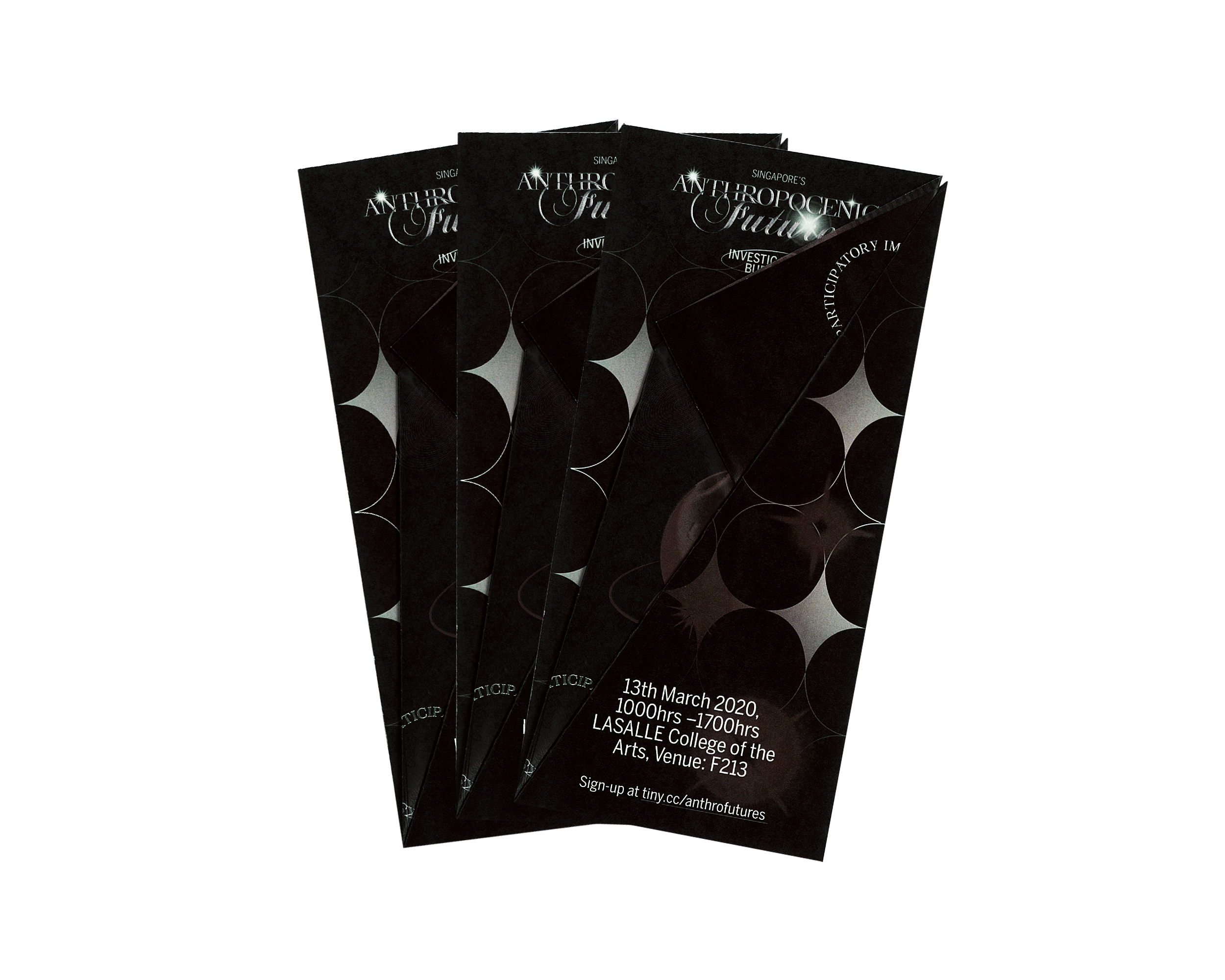

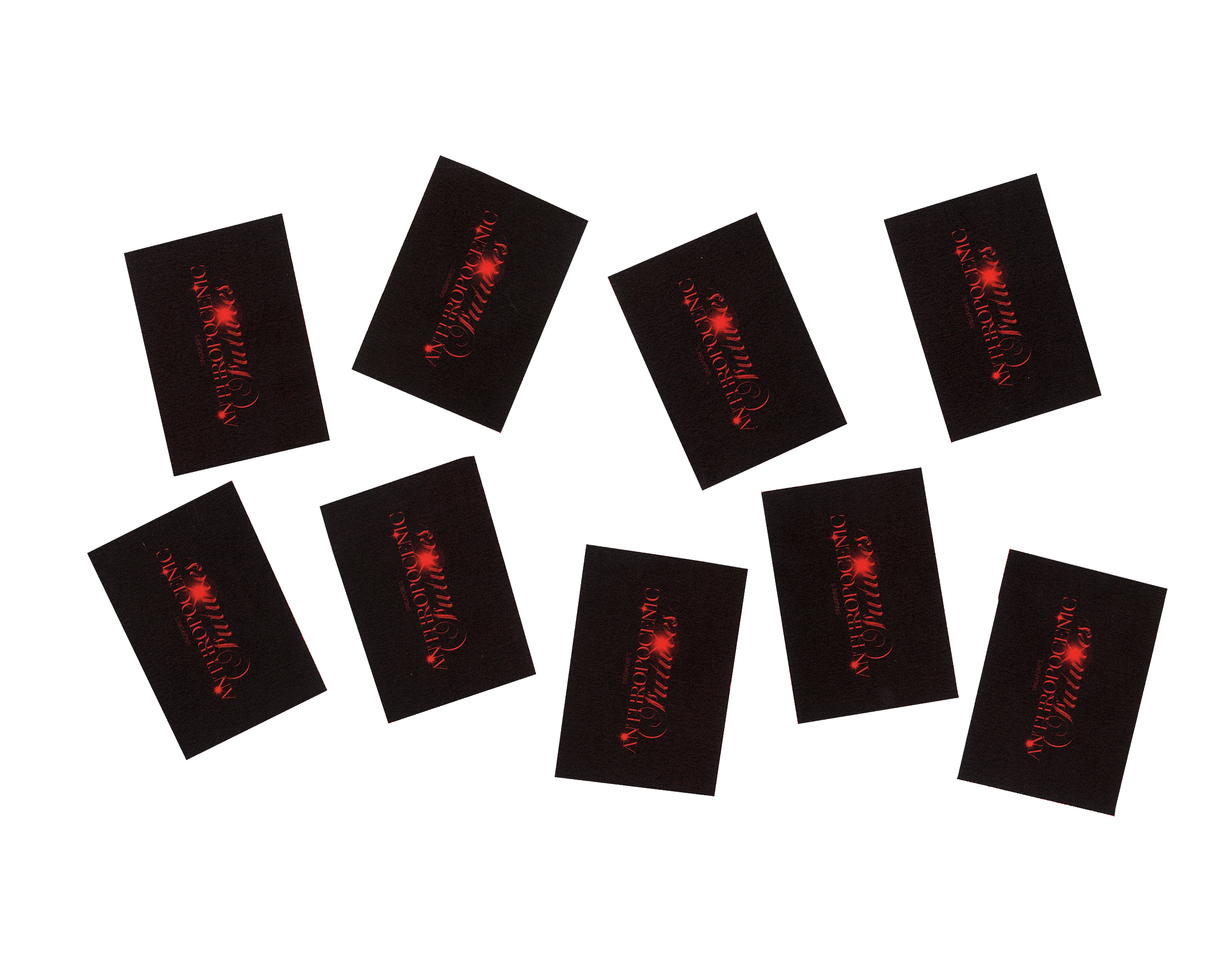


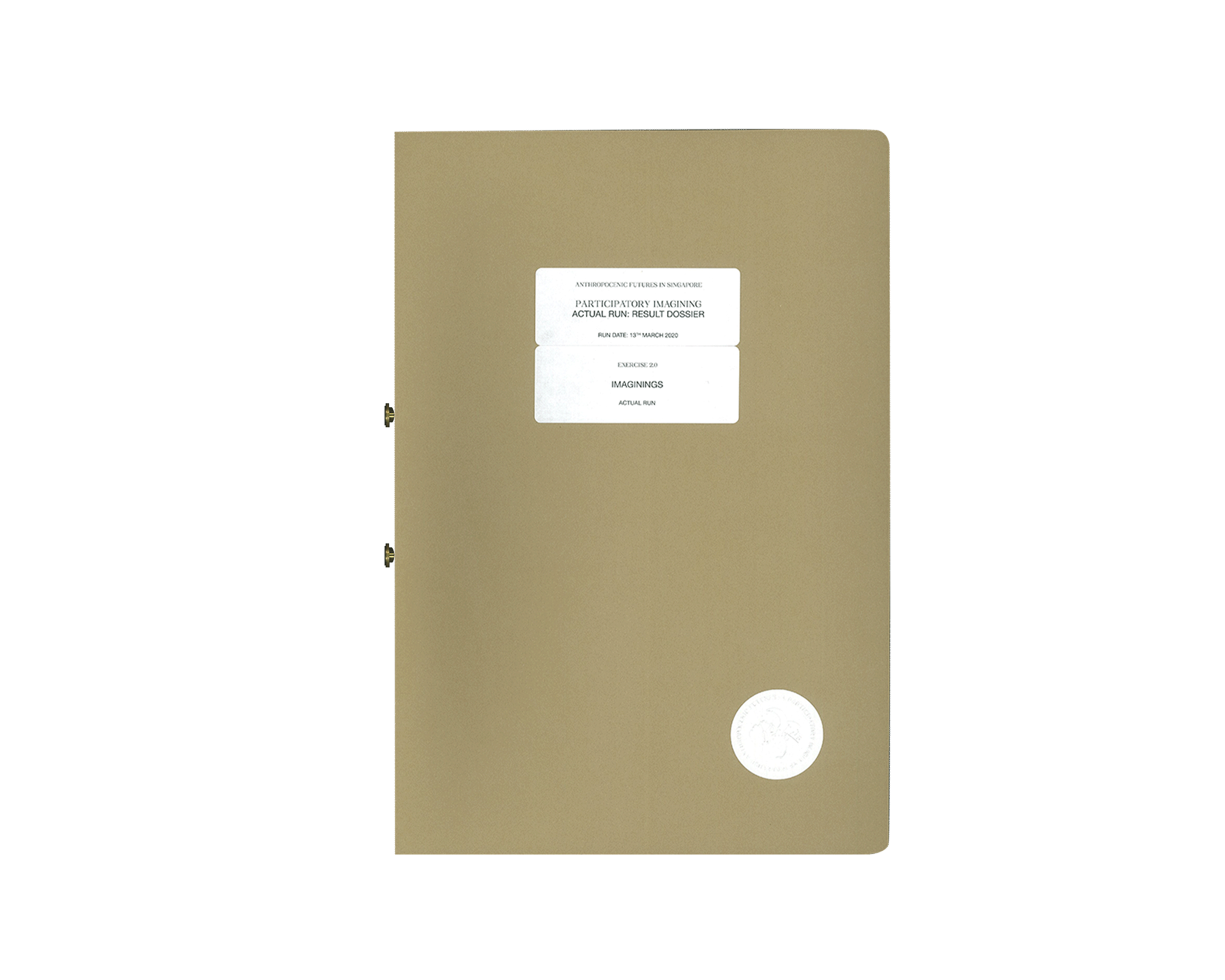
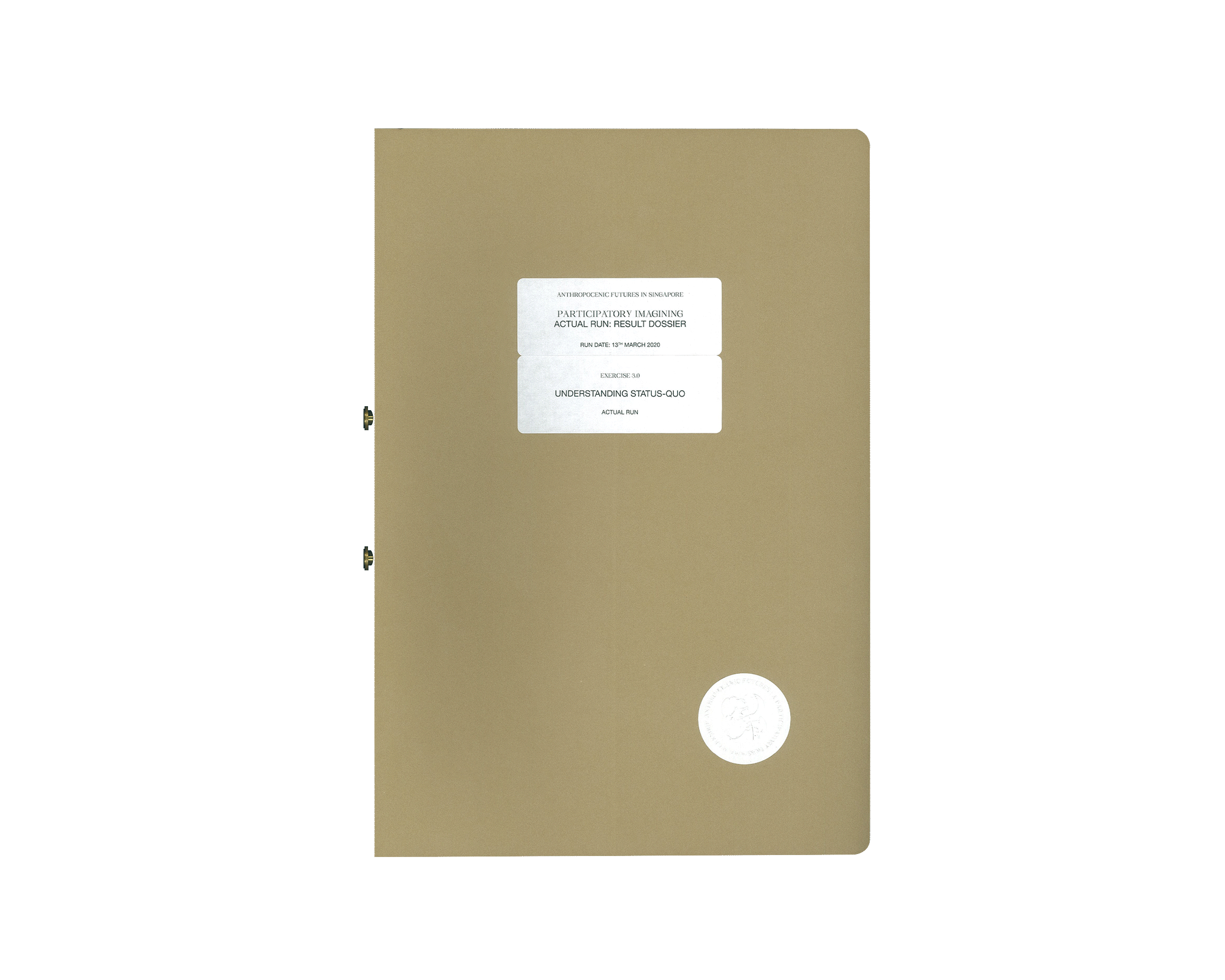
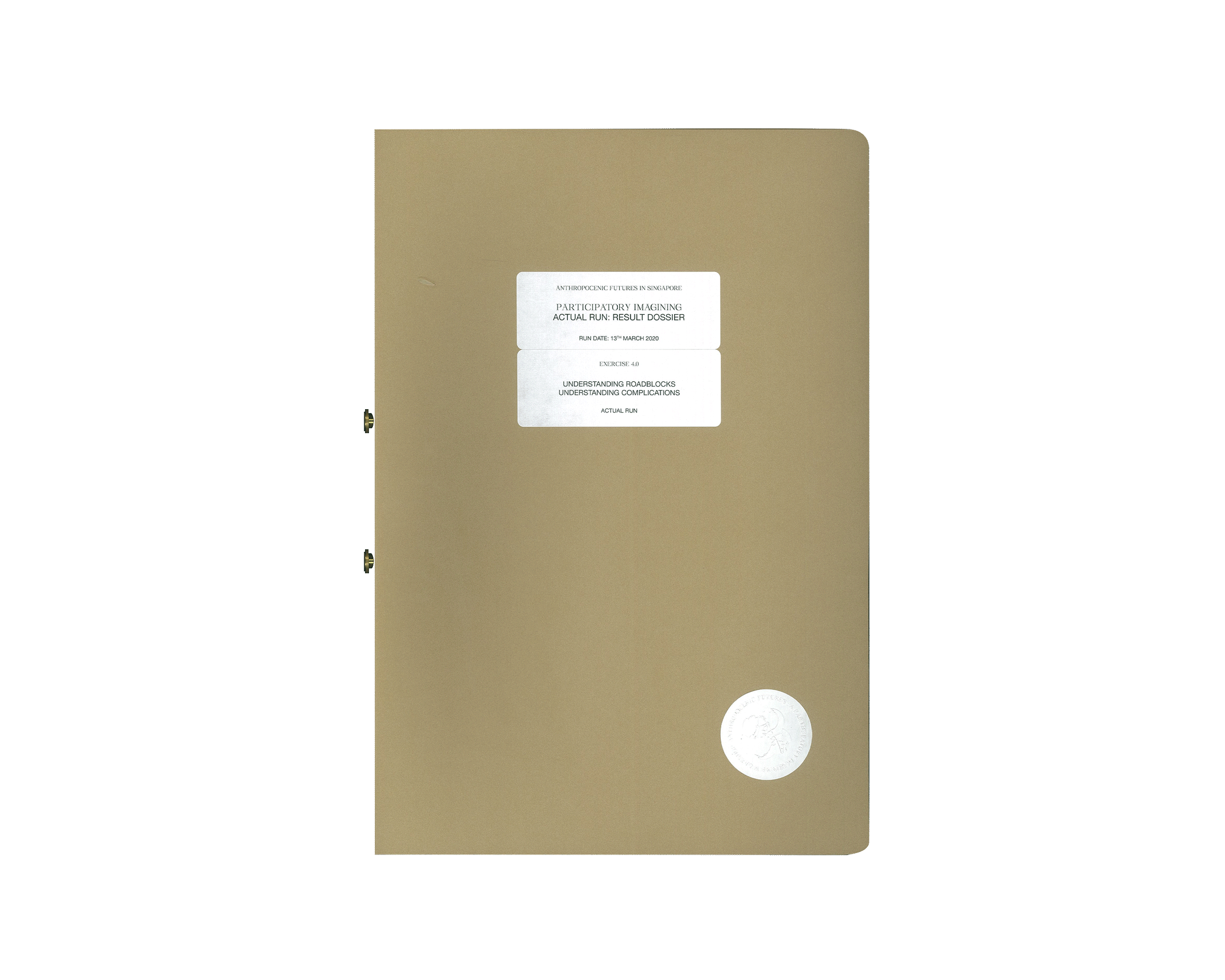
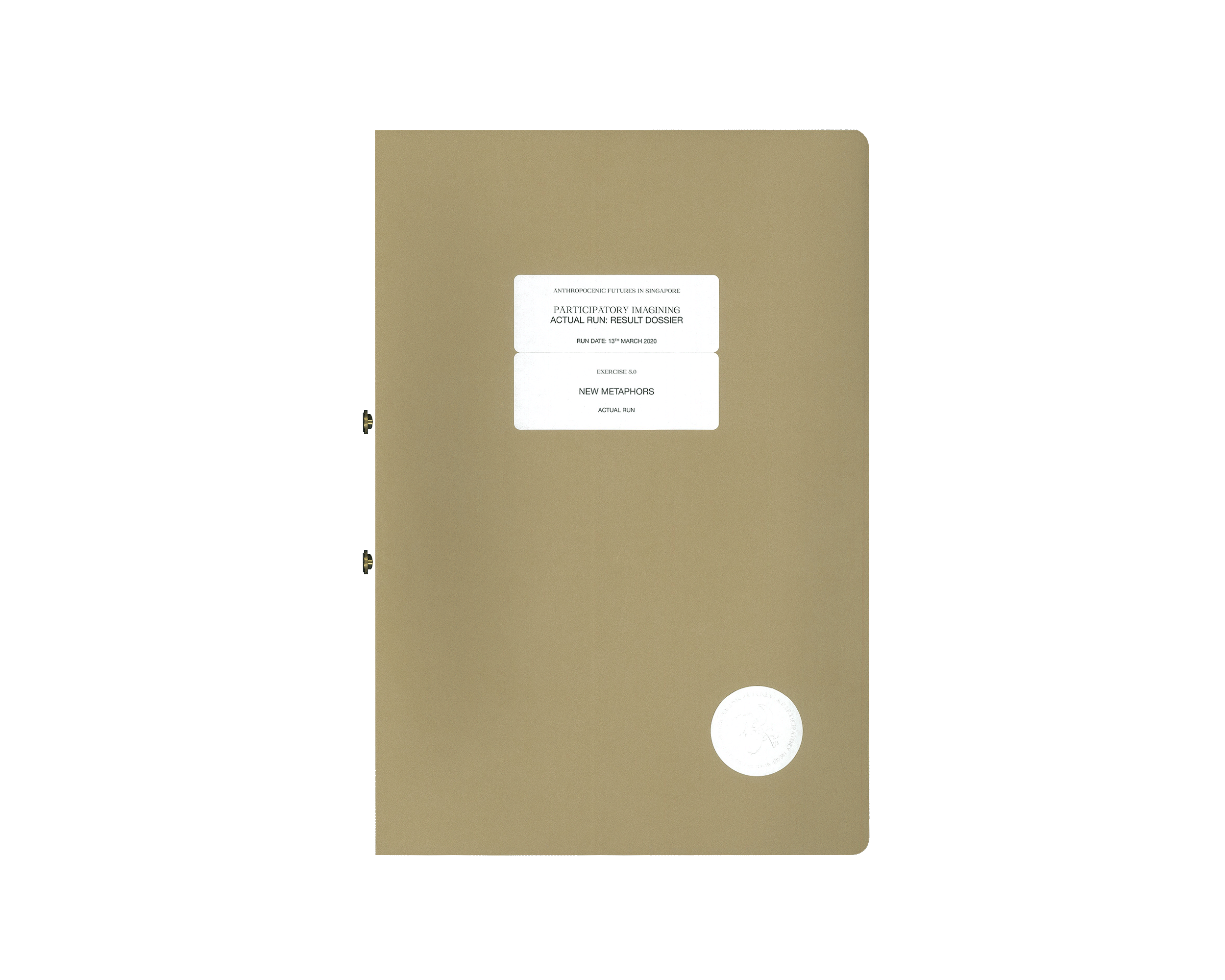
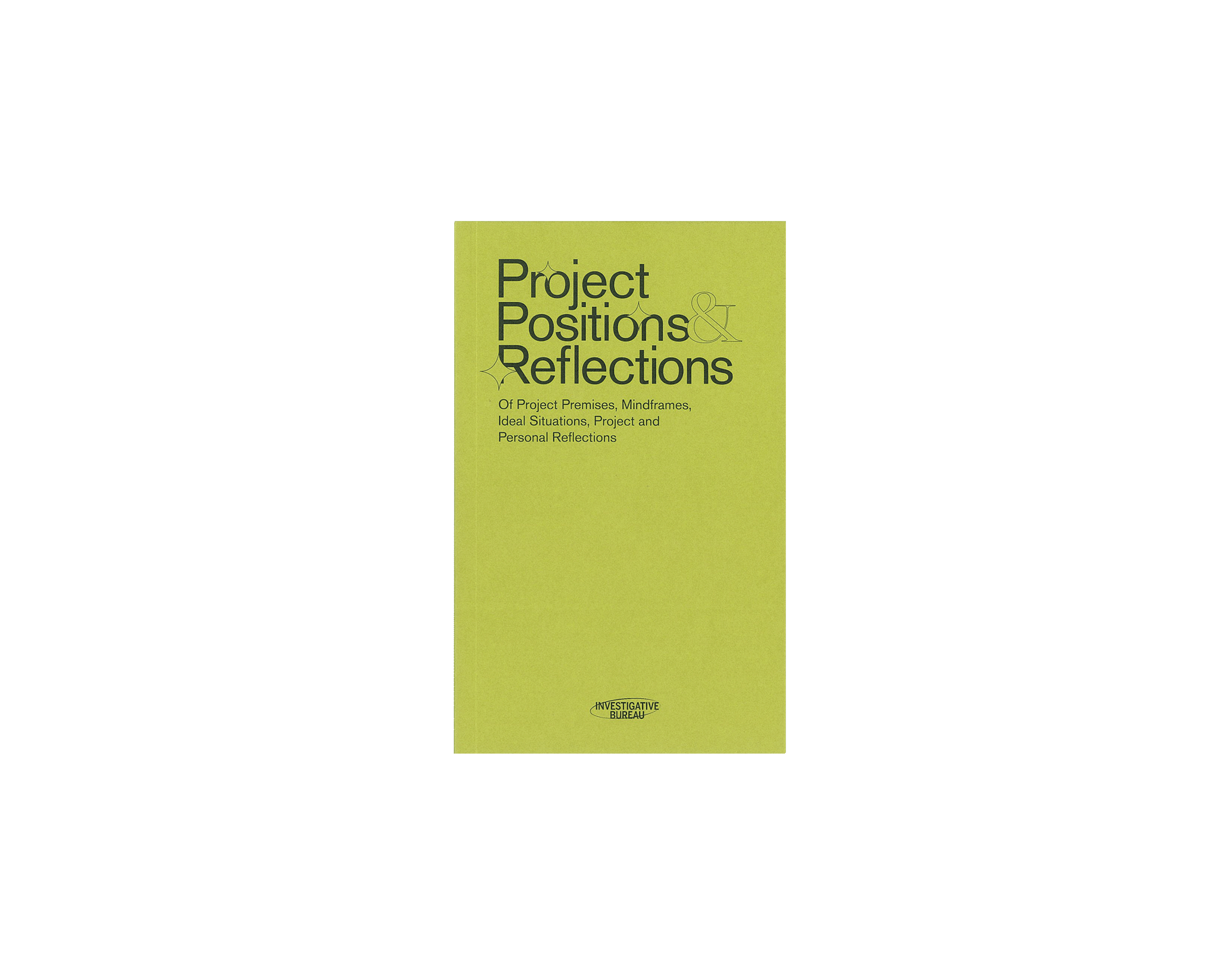

Special thanks to the following participants whom have been of immense help to the project:
(Trial Run)
Christabel Tai, Darren Loo, Foo Chuan Lyn, Farisha Abdulrahiman, Ow Ting Quan, Ng Jiayu, Sarah S. Joe, Irdina Suhaini, Ziting Tan(Actual Run)
Amanda Teo, Benedict Lim, Brice Tan, Christabel Tai, Clara Lee, Daryl Bradley Tan, Irdina Suhaini, Sarah S. Joe, Keith Wong, Ang Kia Yee, Priscilla Diane, Ryan Lau, Samuel Kong, Stanley Goh, Yue Ling Tan, Ziting Tan.Not forgetting immense tutelage and care from tutor, Stanley Lim.


